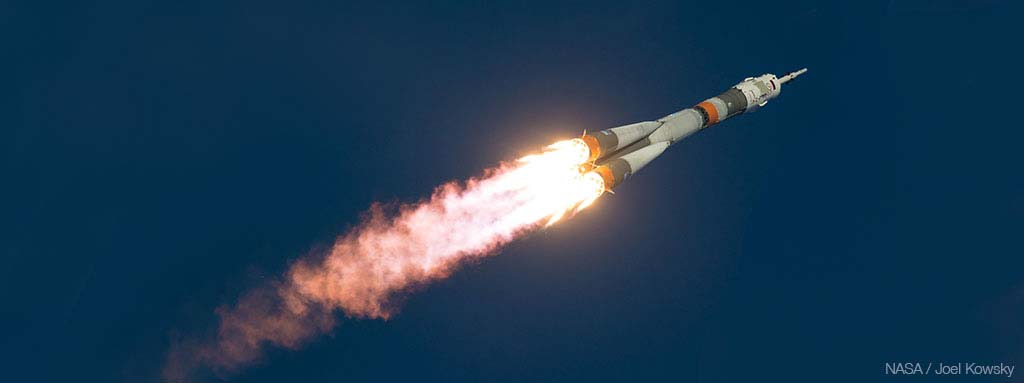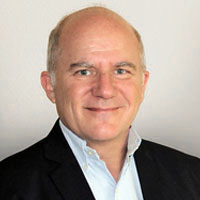In the middle of the 20th century, the two major world powers of the time, the United States and the Soviet Union, were looking up towards the sky, obsessed with finally solving the matter of who was going to lead the race for space. This was back in the Cold War period. For both of them, it was vital to show the world who was the most powerful and technologically advanced. This was synonymous with military supremacy.
However, despite having less advanced technology, it was the Soviet Union that took the lead. It put the first artificial satellite into orbit, Sputnik (1957) and took Yuri Gagarin to outer space (1961) before its eternal rival could do something of the kind. How was this possible?
Even today, after sixty years, the Soyuz spacecraft that travel to the ISS (International Space Station) are propelled by a rocket derived from the R-7.
As with many scientific advances, sometimes making one mistake produces more of a breakthrough than getting things right a hundred times. And that is exactly what happened.
At the end of the nineteen forties, Sergei Korolev (1) was the head of the NII-88 Institute, working on the design of long-range missiles. His first developments were based on the German V-2 missile. Much of its technology had been passed on to both powers after World War II. With the first development of their own, called the R-1 (2), the Soviets achieved similar results to those previously achieved by the Germans. The R-2 managed to replicate the capabilities of the previous model, reaching up to 600 km. The problematic development of the R-3, with a planned range of 3000 km, was cancelled as they could not get a powerful enough engine. Instead they designed the R-5, smaller but incorporating some new concepts, with a range of 1200 km and a payload of nearly 1.4 MT.
Having reached this point (November 1953), the Soviet’s top brass decided that one of the nation’s strategic priorities was to develop an intercontinental ballistic missile (ICBM). It would need to be capable of carrying a nuclear payload to the USA from Soviet territory. The requirements for carrying that bomb would have to be determined by the people in charge of the USSR’s nuclear development.
This responsibility fell upon Andrei Sakharov (3), who was asked to determine the nuclear payload that the new missile should be capable of transporting. In other words, how much would the Soviet bomb that did not even exist yet weigh?
In 1953, Sakharov did not have a clear idea about this. His fusion bomb developments followed two lines of work based on very different concepts. One of them was based on the “Sloyka” design, which consisted of alternating layers of fusion and fission fuel. The other development was called “Teller-Ulam”, a staged fusion bomb. Over time, the latter of these models was shown to be far more effective as it had a much greater destructive capacity with much less weight. But the prominent Soviet scientist did not know that yet.
Given that it was still in the development stage, to avoid getting his fingers burnt, Sakharov decided to exaggerate the report that he wrote for the authorities. He took the data assuming a bomb based on the Sloyka model; far heavier (and more inefficient). The result was that a payload of 5.5 MT would be required.
Time proved this to be an error, because they finally opted for the Teller-Ulam process, which would have required equivalent payloads between 1 and 3 MT.
But the challenge that lay before Sergei Korolev was to build a huge rocket that was capable of carrying as big a payload as that proposed by Andrei Sakharov. According to his initial calculations, he would require an engine with a thrust of around 120 tonnes, something unthinkable at the time bearing in mind that the engine developed from the V-2 had a thrust of up to 25 tonnes. He came up with the solution of a missile (rocket) in which five units were joined together in what was called a “packet” configuration (multistage), consisting of a central stage surrounded by four conical accelerators. This giant missile, called the R-7 (4), was 34 metres long and had a total diameter of 10 metres at its base (3 m around its mid-section). It could carry up to 5 MT to a distance of 8,800 km.
The R-7 was first launched in 1957 from the Baikonur Cosmodrome facility, in what is now Kazakhstan. It was a colossus with an immense capacity that made all of the strategic missiles and rockets developed in the United States look small in comparison. Korolev had managed to develop the largest missile launcher in history, which had also been shown to have an efficiency of 97% in its thousand-plus launches.
On 4 October 1957, the R-7 launched Sputnik 1 into orbit, the first artificial satellite. Shortly afterwards, it sent the dog Laika into space, and subsequently made Yuri Gagarin the first astronaut in history.
Even today, after sixty years, the Soyuz spacecraft that travel to the ISS (International Space Station) are propelled by a rocket derived from the R-7. As a missile it turned out to be a disaster, but as a rocket it was and is magnificent.
Without question, Andrei Sakharov’s miscalculation resulted in one of the biggest successes in the history of aerospace.

(1) Sergei Korolev (or Koroliov) was probably the most important Soviet rocket engineer and designer during the race for space. He was known as the “chief designer”. This book is interesting reading: “How one man masterminded the soviet drive to beat America to the Moon”, by James Hartford.
(2) The letter “R” was put before the names of Russian rockets, and this came from “raketa” or “paketa” (the Russian for rocket).
(3) Among other things, Andrei Sakharov is world famous for winning the Nobel Peace Prize (1975), and for being a prominent Soviet nuclear physicist who confronted his country’s regime. Another very interesting reading is Andrei Sakharov’s Memoirs, which cover this and other issues related to nuclear and ballistic missile development in the former Soviet Union in far more detail.
(4) The R-7 was also called Semyorka (“the seventh”, in Russian) and is known in the west as “SS-6 Sapwood”. Later modifications of this rocket were named: Sputnik, Vostok, Vosjod, Lunik, Molniya, Polet and Soyuz.


